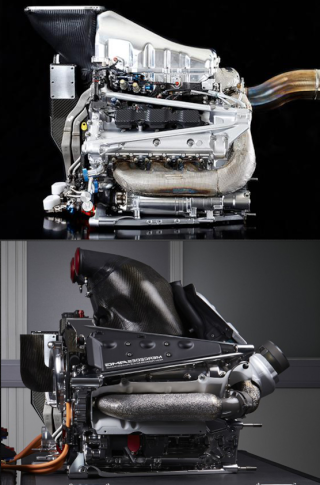Wazari wrote:These new PU's give me a headache and it sure appears now that I retired from race engineering at the right time. It baffles me that the FIA is concerned about "keeping costs down" while they made it necessary to spend enormous amounts of money in R and D, and production to make a competitive PU. After spending too much time analyzing these PU's, it really boils down to the relationship between the MGU-H,K, turbine and ES to maximize output for an entire race lap. It has become IMO, ridiculously complex to keep "costs down".
If it were up to me, I would just keep it simple. Max 2.0 liter displacement, number of cylinders, bore and stroke unrestricted, single turbo, max RPM 16,000 and everyone must run on the same 104 octane "pump fuel" supplied by one vendor only. 8 speed gearbox, no traction control and no ABS. Keep it simple, allow creativity in the ICE design and allow much fuel to be consumed with mid-race re-fueling. This is racing for goodness sakes....sorry for the rant....I feel better now.
Wazari with much respect I think F1 is going in the right direction. F1 knows that the future for the Automobile is to burn less fuel while making the same or more power. Going by your idea of what you would like to see F1 do for an engine platform in bold print, you would have engines making close to 2500 HP. Even with your 104 octane rule this could still could be done. I'm working on a good friends car that is running a 25 year old technology 4G63 engine 2.0L that makes around 1500 HP at 11000 rpm, and both of us are far from F1 engineer status. My point with this is what would a F1 car do with 2500HP? How much of the 2500 HP be used???
Some teams are also the manufacturer so I don't follow the logic of the FIA is trying to cut costs to teams and not the manufacturers? The cost to design and produce the MGU-H units alone must be enormous and sadly much of this technology will never see its way into production vehicles if that is supposedly the end goal. I just don't understand this, also with the blending of these exotic fuels.
Also, what is the purpose of fuel usage restrictions. We're going to spend millions of dollars to make these cars go as fast as possible, oh BTW, there is a fuel usage restriction. Go ahead and spend hundreds of thousands of pounds to make the exotic fuels but you can only use so much a lap. How is that cost saving? This reactionary management style of the FIA is going to ruin F! IMO. I don't think people realize the cost of the hardware (IE. PU's, bodywork, etc.) is not that great compared to the R and D and initial production start up costs. Once you develop and eventually cast an engine block, the subsequent ones are small in cost relative to the cost incurred prior. Limiting teams to 4 or 5 PU's a season doesn't make sense to me either. Maybe I'm too old school, but something needs to change in the FIA's total view with regards to PU's.
Again with much respect in regards to your above statement in bold. I think if the manufacturers want to play with this new technology then they will have to pay and they should be able to afford it. I think we will see some type of this technology in production vehicles. Hybrid down size DI turbo engines that produce great BSFC numbers are already being built. If the manufacturer could implement a MGHU to help charge the battery and add some extra power to the battery pack at WOT and add a small amount at mid load would be awesome!!! I own a 2000 Honda Insight that could use the extra power and charge.

On the subject of the exotic fuels that are being made for F1, I think we need to see some advancement. Todays fuel has been stagnant for years now. Its time to improve the fuel and design it around DI with high cylinder pressures with faster burn rates.


